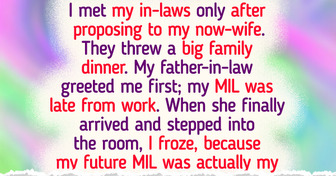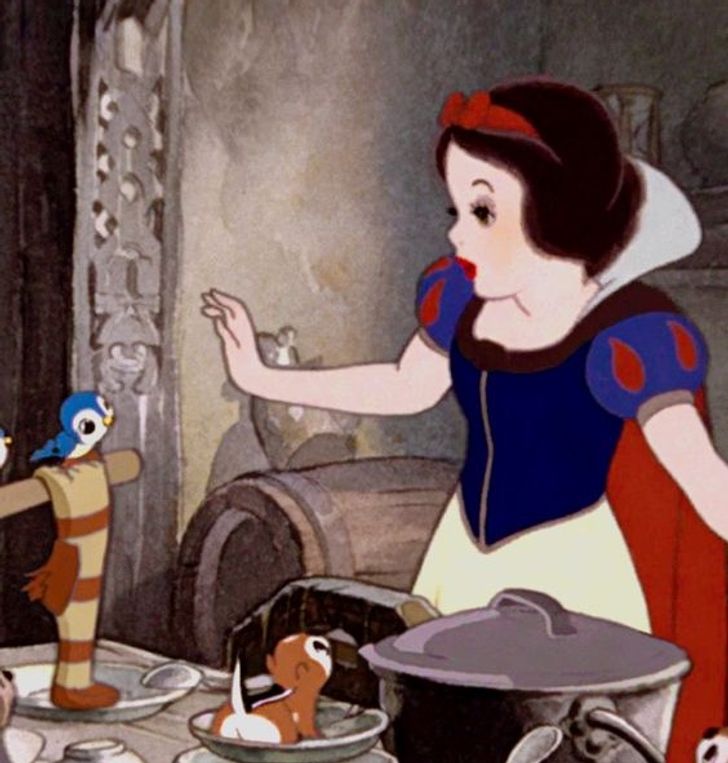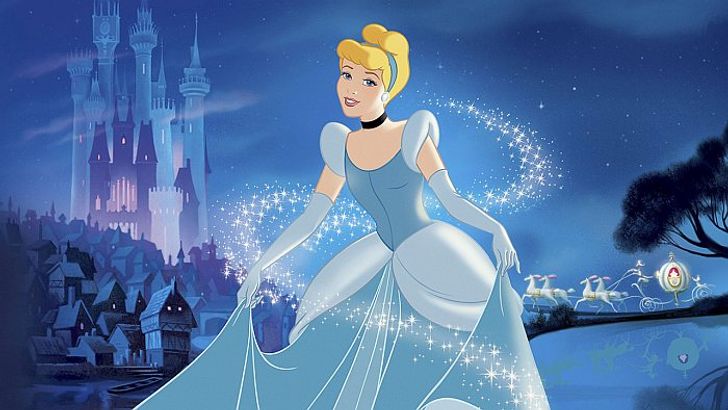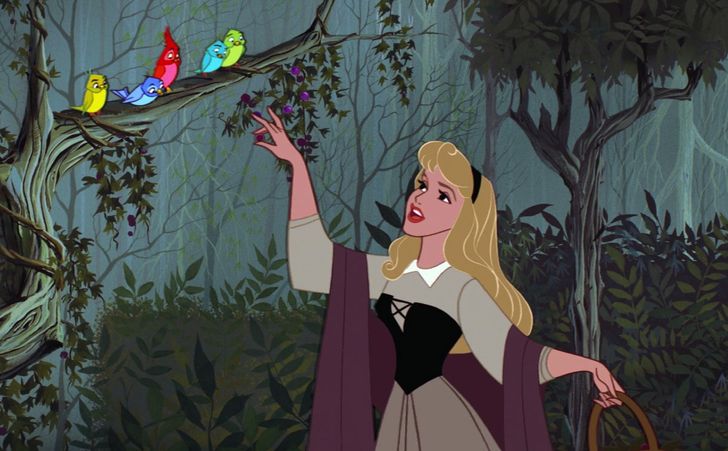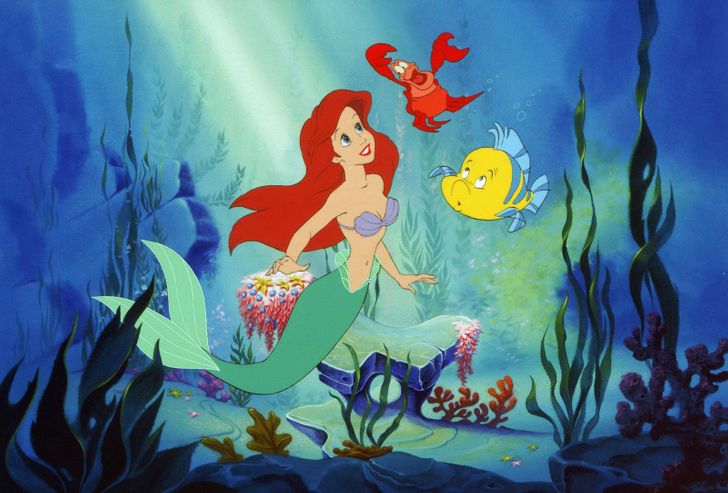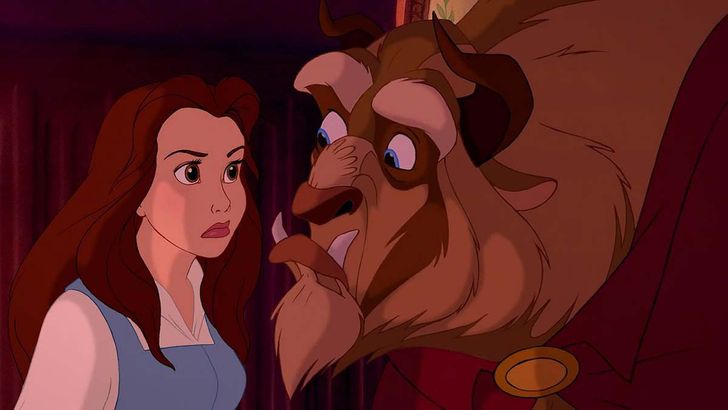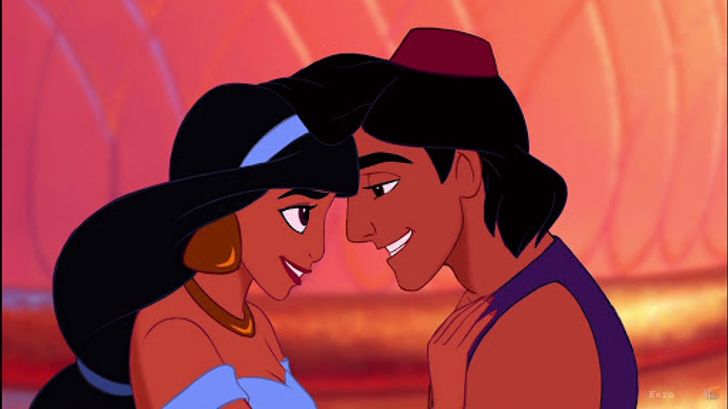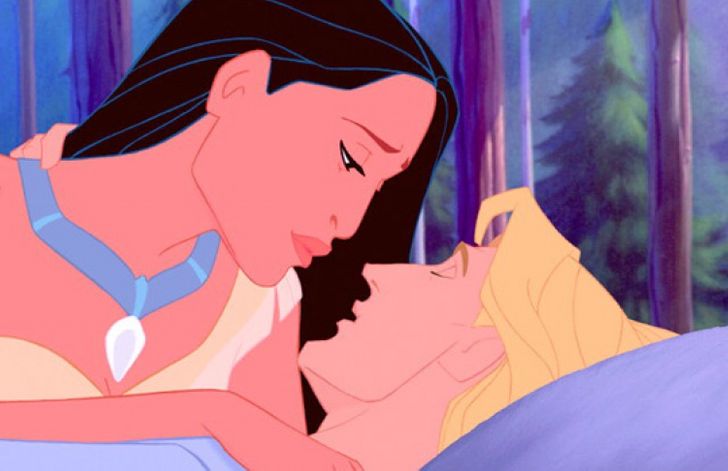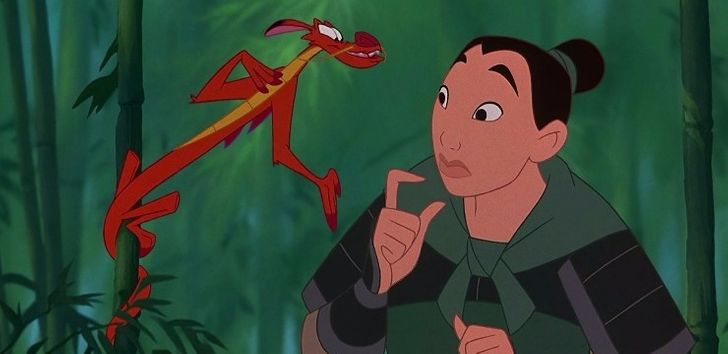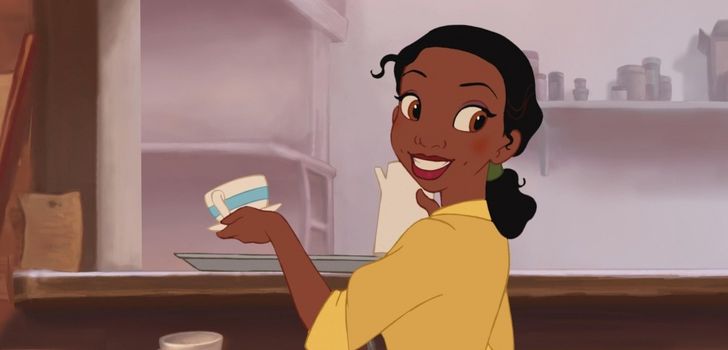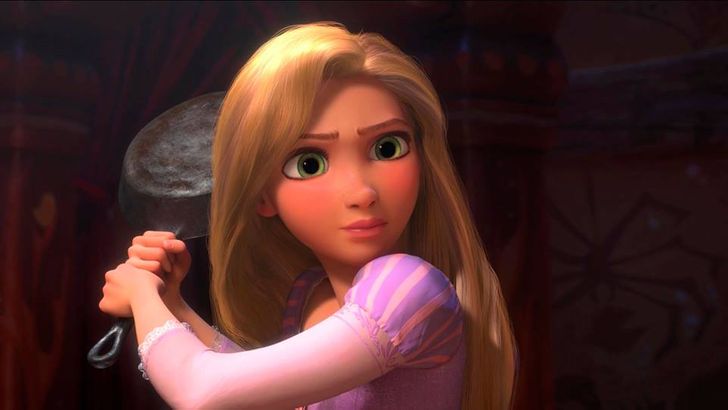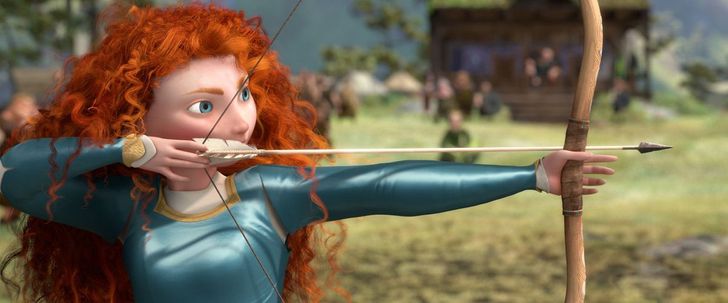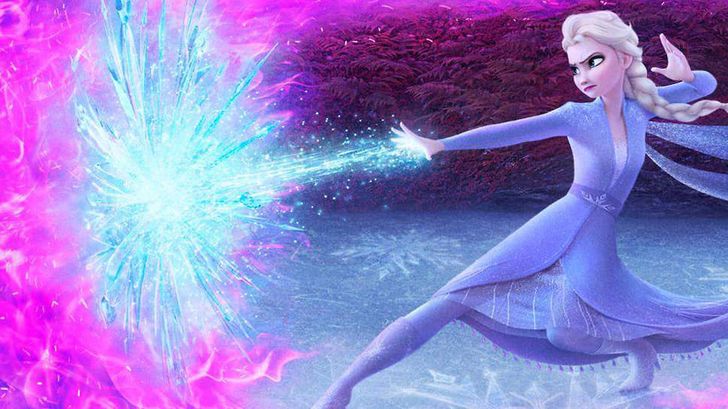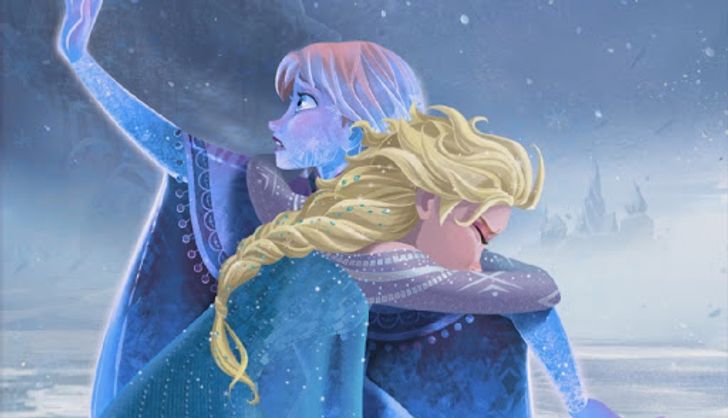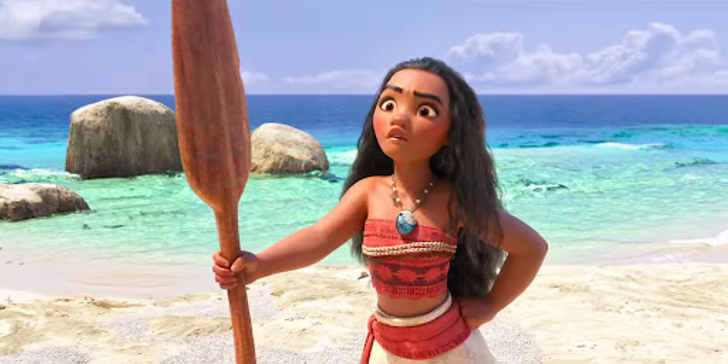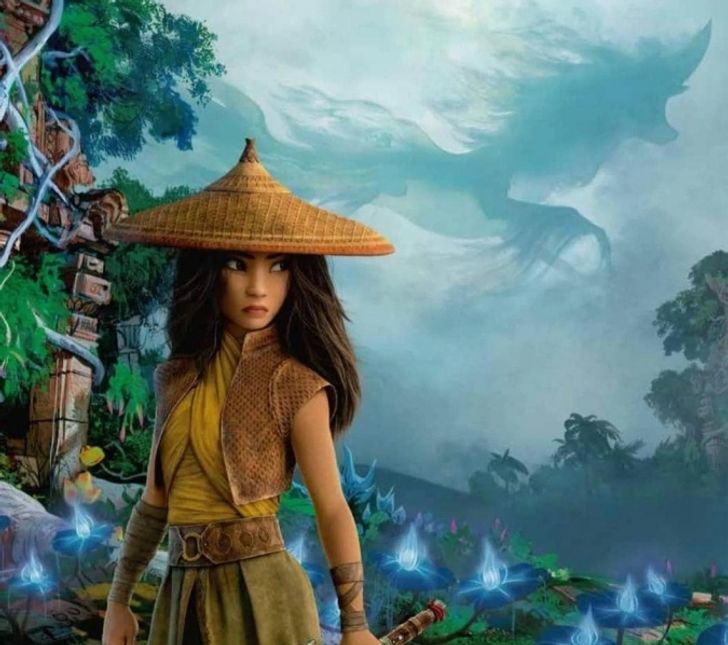whats the link
How Disney Princesses Have Changed Over Time and What We Can Expect in the Future
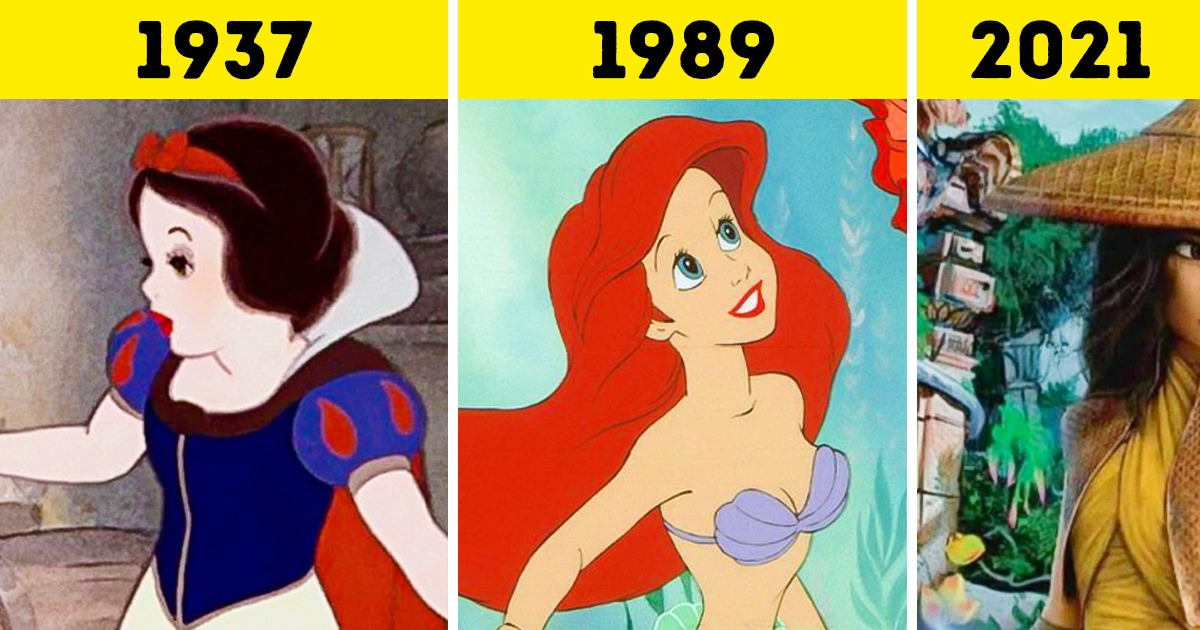
When watching cartoons about princesses, we might not realize that it’s not just animated characters that we see on the screen. They simultaneously reflect the features of a certain time period and form the standards of women’s behavior and social norms of their period. If you look at those princesses closer, you’ll understand the goals of the girls from this or that decade, as well as their position in society. For more than 80 years of Disney princess history, a real evolution of female characters has taken place and it is directly related to what was happening in society.
Bright Side watched all the cartoons with Disney princesses and figured out why they have changed so much.
Snow White, Cinderella, and Sleeping Beauty
Snow White and the Seven Dwarfs, 1937
It was the year 1937 when the world saw the first full-length cartoon masterpiece from Disney. Snow White is a good housekeeper, especially taking into account the fact that she cleans the houses of complete strangers. She is naive and trusts everyone. Even forest animals love her. The first Disney princess takes no action to fight for herself: she runs away to the forest from the evil queen without standing up for herself, and she is saved from death by a prince who she has seen only once.
Cinderella suffers from oppression, she is exploited heavily, but she doesn’t stand up for herself either. At all... All she can do is run away from home to a ball, feeling nervous that her stepmother and stepsisters might find out about it. Just like in the story about Snow White, the first prince she meets becomes her salvation.
Тhe third princess, Aurora, is saved by the kiss of a man she hardly knows — the man who, of course, turns out to be a prince. Aurora’s destiny is always controlled by someone else: her parents, fairies, Maleficent, a prince, but never herself.
Aurora, Cinderella, and Snow White are beautiful in their naivety, kindness, and gentleness. But these classic images are too luscious and unreasonable for some viewers: marrying the first guy you meet, sleeping in an attic with rats when you have the opportunity to leave your aggressors, or settling in with strangers (it would be appropriate to recall Shrek’s joke about Snow White here, “Although she lives with 7 other men, she’s not easy.”).
The first Disney princesses are ideal housekeepers. They are obedient and silent, they lack initiative, and they have one main goal in life — to get married successfully. All 3 stories are based on the following plot: an incredibly beautiful girl is suffering because of her life circumstances and waits for someone to save her. In fact, these characters’ issues resolve only thanks to their appearance and cuteness, not their actions and deeds. But the epoch of beauties with good housekeeping skills is finished.
Ariel and Belle
Disney changes over time as well. In 1966, its founder, Walt Disney, passes away. The norms of society and the image of the ideal character change too, and that’s when Ariel rushes onto the screens. The little mermaid is rebellious, wayward, self-confident, looking for adventures, and acting contrary to her father, who is actually the lord of the underwater world. But just like her predecessors, she falls head over heels in love with the first man she meets, who, of course, turns out to be a prince. But this time the princess saves her beloved man and takes risks for the sake of her own desires.
2 years after the release of The Little Mermaid, Belle was introduced to the world. She is the very beauty who refuses to marry the local handsome favorite of all the girls and who is fond of reading books. Being a married housekeeper is not her lifelong goal. She bravely goes on a journey searching for her father, decides to stay in the Beast’s castle instead of her father, and stands up to protect the Beast in front of a furious crowd. By the way, despite being cursed, the Beast is also a prince. But it’s the first time that a princess falls in love with a man, not for his appearance, but for his personality, which is hiding behind the guise of the beast.
In the 1960s and 1980s, women were fighting for social equality, and ideas about women were changing. The princesses got their own aspirations and the right to make a choice. They are smart and active. Apart from getting married, they have other wishes and goals. However, “happily ever after” still means a lot for them, but at this point, viewers could see their independence and assertiveness.
Jasmine, Pocahontas, and Mulan
Amid the struggles for women’s empowerment, the emphasis is now on race and culture. Before Jasmine, all princesses were the same race. She launched the era when cartoons with the main female protagonists of different origins started to appear on the screen. She is also the first princess who gave her heart to a simple man, not a prince.
Pocahontas is the young daughter of the Indian leader of the Powhatan tribe. She is stubborn and brave — just like other princesses of those times. Even her name can be translated as “disobedient.”
Mulan is a girl who is of Chinese origin and who dresses up as a man and proves that a female warrior can be just as good as a male warrior.
Tiana, Rapunzel, and Merida
The Princess and the Frog, 2009
At the beginning of the movie, Tiana works as a waitress at 2 jobs just to save enough money for her dream — to open her own restaurant. She doesn’t become a princess until the end of the cartoon when she marries the prince. She is extremely purposeful and hard-working. At the end of the cartoon, the viewers see an interesting plot twist: all of the events in the movie bring the main characters to an understanding that family and love are no less important than other goals.
Unlike the first princesses, Rapunzel doesn’t fall in love with the first guy she meets, but instead hits him with a frying pan and leaves home for her dream — to see the mysterious lights. Just like in The Princess and the Frog, the main character first chases her dream, while love is not a priority in her life.
It’s not the feistiness of the red-haired dashing horse-rider Merida that should be paid attention to, but her attitude toward men. She is ready for anything, but not to get married. She even arranges a tournament among candidates to become her husband and eventually beats everyone by precisely shooting arrows at a target. The keynote of the story is not a love story about the mutual understanding between a man and a woman, but a story about a mother-daughter relationship. Now princesses are chasing their dreams, while their relationship with men fades into the background.
The same tendencies that were started and shown at the end of the last century, can be seen in the first princesses of the 21st century: willfulness, freedom, and the choice of one’s own destiny.
“Non-princesses” Moana, Elsa, and Anna
Not all Disney characters are princesses. There is a limited list of animated characters who were honored to get this title. It consists of the 11 princesses that we have already mentioned. And the list keeps changing to exclude or include new personas.
Today, Moana, Anna, and Elsa are not official Disney princesses. There are no clear explanations as to why, but there are different guesses, including the following: viewers became critical of the concept of princesses and that’s why the new protagonists are not included on this list. But that’s only one of the versions. Perhaps these characters will be added there later, but we would like to tell you about them now.
Frozen, 2013 and Frozen II, 2019
The true story of love takes place between Anna and Elsa. Only the sincere love that exists between sisters (not Anna’s feelings toward the Sámi iceman Kristoff or the liar-prince) could save her.
All Disney female protagonists are no longer completely perfect and good. For example, Elsa becomes dangerous for herself and those in her surroundings, including her sister. But just like other humans, she is trying to fight her fears. Moreover, good doesn’t win in every situation, but only in those cases when the characters sincerely try to not give freedom to the dark corners of their souls.
Also, Elsa’s story is an actual example for modern girls, because the queen of Arendelle keeps searching for the answer to the question that many of us are familiar with, “Who am I?”
The tribe leader’s daughter is supposed to save her people and that’s her goal. Also, it’s worth noting the Moana’s body shape doesn’t look like the classic slim and a tall silhouette appears in the open ocean on a ship with the muscular tattooed demi-god Maui, and not even a sparkle of love or passion takes place between them. It’s the first time for a Disney cartoon where the plot lacks the love storyline at all. The center of the story is the girl herself. It’s a shift in the perception of beauty. Moana creates the impression of a young, lively, and active girl. She is not perfect, she fights her fears and her lack of confidence, and she takes a brave step into the ocean.
Who is the next?
Raya and the Last Dragon, 2021
Next year the list of Disney’s bright protagonists will be complemented by a lone eastern warrior named Raya, who will be saving her kingdom and looking for dragons.
Kelly Marie Tran, the actress who does the voiceover for Raya, outlined that technically the eastern warrior is a princess, but she wonders what being a princess actually means nowadays?
“Disney Princesses have inspired generations of children to dream big and believe in themselves,” said Marianthi O’Dwyer, Vice President, Franchise at The Walt Disney Company. Perhaps that’s the answer to Kelly Marie Tran’s question. Time, in its turn, will show what that “big” in dreaming big is and which side of ours we should believe in.
Which of Disney characters are your favorite ones? How do you see a princess of the future?
Comments
Related Reads
A Chilean Artist Creates Modern Versions of Disney Princesses, and We’re Smitten by Each of Them
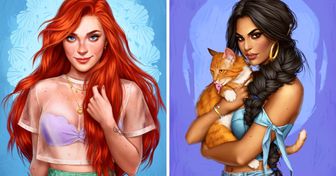
An Artist Shows a Destroyed Disney World, and It Makes Us Think About Saving Our Own
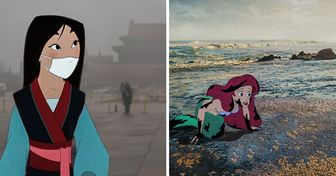
18 Seemingly Ordinary Objects That Actually Hide a Mystery

13 Stories That Prove Kindness Is the Quiet Superpower We All Share
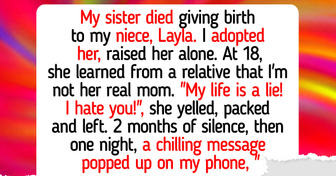
11 Stories of Moms Who Finally Accepted Their Son’s Partners
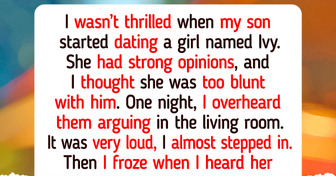
I Refuse to Sleep Under the Same Roof as My Stepson — My Daughter’s Safety Comes First
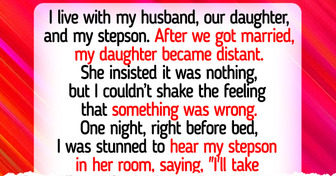
15+ Stories That Prove First Love Stays With Us Forever

14 Stories That Prove Kindness Takes a Moment, but Means the World
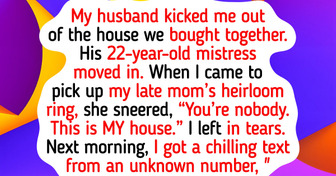
I Agreed to Adopt My SIL’s Baby — but Her Real Motive for Giving Him Up Broke My Heart
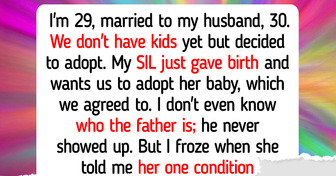
I Refuse to Pay Half on a Date—I’m Vegan, I Never Eat Much
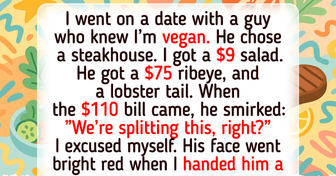
10 Honest Stories That Capture the Struggles and Pain of Blended Families
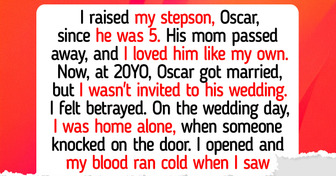
13 People Share the Things They’ve Been Hiding From Their Partners for Years
